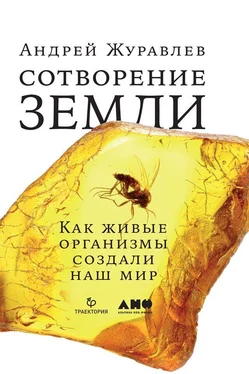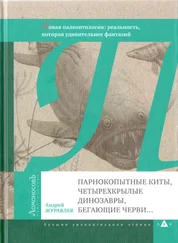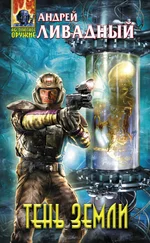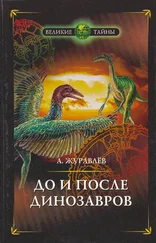Brandt D. S., Elias R. J. 1989. Temporal variations in tempestite thickness may be a geologic record of atmospheric CO 2// Geology , 17, 951–2.
Brodribb T. J., Field T. S. 2010. Leaf hydraulic evolution led a surge in leaf photosynthetic capacity during early angiosperm diversification // Ecology Letters , 13, 175–83.
Brown C. M. et al. 2017. An exceptionally preserved three-dimensional armored dinosaur reveals insight into coloration and Cretaceous predator-prey dynamics // Current Biology , 27, 1–8. DOI: 10.1016/j.cub.2017.06.071
Burgess S. D., Bowring S. A. 2015. High-precision geochronology confirms voluminous magmatism before, during, and after Earth’s most severe extinction // Science Advances , 1, e1500470. DOI: 10.1126/sciadv.1500470
Burness G. P., Diamond J., Flannery T. 2001. Dinosaurs, dragons, and dwarfs: The evolution of maximal body size // Proceedings of the National Academy of Sciences of the USA, 98, 14518–23.
Carter L. B., Dasgupta R. 2013. Hydrous basalt-limestone interaction at crustal conditions: Implications for generation of ultracalcic melts and outflux of CO 2at volcanic arcs // Earth and Planetary Science Letters , 427, 202–14.
Chernova O. F., Kirillova I. V., Boeskorov G. G., Shidlovskiy F. K., Kabilov M. R. 2015. Architectonics of the hairs of the woolly mammoth and woolly rhino // Proceedings of the Zoological Institute RAS , 319, 441–60.
Chu D. et al. 2015. Early Triassic wrinkle structures on land: stressed environments and oases for life // Scientific Reports , 5, 10109. DOI: 10.1038/srep10109
Clapham M. E., Payne J. L. 2011. Acidification, anoxia, and extinction: A multiple logistic regression analysis of extinction selectivity during the Middle and Late Permian // Geology , 39, 1059–62.
Clarkson M. O. et al. 2015. Ocean acidification and the Permian-Triassic mass extinction // Science , 348, 229–32.
Clarkson M. O. et al. 2016. Dynamic anoxic ferruginous conditions during the end-Permian mass extinction and recovery // Nature Communications , 7, 12236. DOI: 10.1038/ncomms.12236
Codron D., Carbone C., Müller D. W. H., Clauss M. 2012. Ontogenetic niche shifts in dinosaurs influenced size, diversity and extinction in terrestrial vertebrates // Biology Letters , 8, 620–3.
Cui Y., Kump L. R. 2015. Global warming and the end-Permian extinction event: Proxy and modelling perspectives // Earth-Science Reviews, 149, 5–22.
Danise S., Higgs N. D. 2015. Bone-eating Osedax worms lived on Mesozoic marine reptile deadfalls // Biology Letters, 11 (4), 20150072. DOI: 10.1098/rsbl.2015.0072
de Boer H. J., Eppinga M. B., Wassen M. J., Dekker S. C. 2012. A critical transition in leaf evolution facilitated the Cretaceous angiosperm revolution // Nature Communications , 3, 1221. DOI: 10.1038/ncomms2217
Dlussky G. M., Wappler T., Wedmann S. 2009. Fossil ants of the genus Gesomyrmex Mayr (Hymenoptera, Formicidae) from the Eocene of Europe and remarks on the evolution of arboreal communities // Zootaxa , 2031, 1–20.
Doughty C. E. et al. 2016. Global nutrient transport in a world of giants // Proceedings of the National Academy of Sciences of the USA, 113, 868–73.
Doyle J. A. 2012. Molecular and fossil evidence on the origin of angiosperms // Annual Review of Earth and Planetary Sciences , 40, 301–26.
Eagle R. A. et al. 2011. Dinosaur body temperatures determined from isotopic ( 13C- 18O) ordering in fossil biominerals // Science , 333, 443–5.
Edwards E. J. et al. 2010. The origins of C 4grasslands: Integrating evolutionary and ecosystem science // Science , 328, 587–91.
Ellison A. M., Farnsworth E. J., Merkt R. E. 1999. Origins of mangrove ecosystems and the mangrove biodiversity anomaly // Global Ecology and Biogeography , 8, 95–115.
Erickson G. M. et al. 2015. Wear biomechanics in the slicing dentition of the giant horned dinosaur Triceratops // Science Advances , 1, e1500055. DOI: 10.1126/sciadv.1500055
Eriksson O. 2016. Evolution of angiosperm seed disperser mutualisms: the timing of origins and their consequences for coevolutionary interactions between angiosperms and frugivores // Biological Reviews , 91, 168–86.
Falkowski P. G. et al. 2004. The evolution of modern eukaryotic plankton // Science , 305, 354–60.
Fastovski D. E., Weishampel D. B. 2009. Dinosaurs: A Concise Natural History. Cambridge: Cambridge Univ. Press, 379 p.
Feild T. S. et al. 2004. Dark and disturbed: a new image of early angiosperm ecology // Paleobiology , 30, 82–107.
Frey E., Tischlinger H. 2012. The Late Jurassic pterosaur Rhamphorhynchus , a frequent victim of the ganoid fish Aspidorhynchus ? // PLoS ONE , 7 (3), e31945. DOI: 10.1371/journal.pone.0031945
Friis E. M., Pedersen K. R., Crane P. R. 2010. Diversity and obscurity: fossil flowers and the early history of angiosperms // Philosophical Transactions of the Royal Society of London B: Biological Sciences, 365, 369–82.
Gattuso J.-P., Allemand D., Frankignoulle M. 1999. Photosynthesis and calcification at cellular, organismal and community levels in coral reefs: A review of interactions and control by carbonate chemistry // American Zoologist , 39, 160–83.
Gingerich P. D., Haq M.-u., Zalmout I. S., Khan I. H., Malkani M. S. 2001. Origin of whales from early artiodactyls: Hands and feet of Eocene Protocetidae from Pakistan // Science , 293, 2239–42.
Gnanadesikan A., Anderson W. G. 2009. Ocean water clarity and the ocean general circulation in a coupled climate model // Journal of Physical Oceanography , 39, 314–32.
Goswami A. et al. 2011. A radiation of arboreal basal eutherian mammals beginning in the Late Cretaceous of India // Proceedings of the National Academy of Sciences of the USA, 108, 16333–8.
Guil-Guerrero J. L. et al. 2014. The fat from frozen mammals reveals sources of essential fatty acids suitable Palaeolithic and Neolithic humans // PLoS ONE , 9 (1), e84480. DOI: 10.1371/journal.pone.0084480
Guthrie R. D. 1990. Frozen Fauna of the Mammoth Steppe: The Story of Blue Babe. Chicago: Univ. Chicago Press, 323 p.
Hallock P. 1987. Fluctuations in the trophic resource continuum: A factor of global diversity cycles? // Paleoceanography, 2, 457–71.
Hards V. L. 2005. Volcanic contributions to the global carbon cycle // British Geological Survey Occasional Publication , 10, 1–26.
Heim N. A., Knope M. L., Schaal E. K., Wang S. C., Payne J. L. 2015. Cope’s rule in the evolution of marine animals // Science , 347, 867–70.
Hendry K. R. et al. 2018. Competition between silicifiers and non-silicifiers in the Past and Present ocean and its evolutionary impacts // Frontiers in Marine Science , 5, 22. DOI: 10.3389/fmars.2018.00022
Hill R. V., D’Emic M. D., Bever G. S., Norell M. A. 2015. A complex hyobranchial apparatus in a Cretaceous dinosaur and the antiquity of avian paraglossalia // Zoological Journal of the Linnean Society. DOI: 10.1111/zoj.12293
Huang S. et al. 2017. Mammal body size evolution in North America and Europe over 20 Myr: similar trends generated by different processes // Proceedings of the Royal Society of London B, 284. DOI: 10.1098/rspb.2016.2361
Читать дальше
Конец ознакомительного отрывка
Купить книгу








![Андрей Максимов - Самоубийство Земли [Повести и рассказы]](/books/388419/andrej-maksimov-samoubijstvo-zemli-povesti-i-rass-thumb.webp)
![Андрей Бондаренко - На Краю Земли. Дилогия [СИ]](/books/423408/andrej-bondarenko-na-krayu-zemli-dilogiya-si-thumb.webp)


